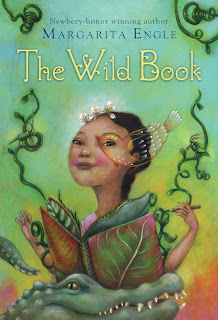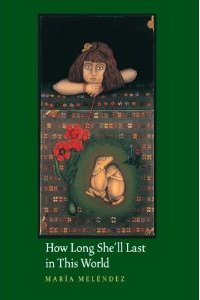I’ll begin by saying: Who has her first book coming out this fall? My guest Guadalupe Garcia McCall. Her verse novel, Under the Mesquite, will be published in September. I met Guadalupe through e-mail, and we soon discovered our many connections including a love of nature. Congratulations on your verse novel, Guadalupe and welcome to Bookjoy Creativity Salon!
1. So how does it feel to have your first book published?
GGM: This is an amazing feeling, indescribable. When the ARCs first came in, I walked around the house holding it like a baby, carrying it everywhere. I would stand it on the counter and look at it while I cooked. I stood it next to me on my desk and watched it while I worked on novel number 2. I think I read it in ARC form like 20 times because it was such a dream come true.
2. Tell us about your publishing journey.
 |
| Under the Mesquite (Sept. 2011) |
GGM: It has really been quite a journey. Under the Mesquite started as a collection of poems I wrote over many years when I wanted to “show” my students how easy writing poetry can be. They would say, “This is hard,” and I would show them how easy it was by just taking a memory and turning it into a poem in class. Of course, I had to rewrite it for every class, so by the end of the day, the poem was usually revised several times. I started collecting these “little poems” and when I had about 35 of them, I sent them out. Emily Hazel, my editor at Lee & Low, saw the potential for a novel in verse in them, and the rest is history.
3. Did you always want to be a writer?
GGM: Oh, yes, always. My first memories of writing are special. My father taught me to write so that I would be “prepared” for school in the United States. I loved listening to the pencil “whisper the words” as it travelled on the paper with his hand guiding mine. But the one who really put the idea in my head was my third grade teacher, Mr. Hernandez. After he read one of my stories (I was in a bilingual classroom, so I wrote it in Spanish) he asked me if I had written the story by myself. I said I had, and he said, “Someday, you’re going to be a writer.” Of course, hearing him say it cemented it in my head. It’s amazing the profound effect a good teacher can have on us. If Mr. Hernandez hadn’t said it quite like that, I might not have grown up believing it.
4. Have you always thought of yourself as creative? How do you nurture your creative life?
GGM: I have always loved the arts. My father, who was a carpenter, was very creative. He used to play the guitar, sing, and draw. One day, I came home from school crying because my teacher had given me a zero on a drawing of the earth. He sat down and taught me how “easy” drawing could be. It opened up the world of art for me.
My mother too was instrumental in helping me find my creativity. She recognized that I was “artistic” before I did and enrolled me in singing, dancing, and acting classes in Mexico when I was in elementary. I love to sing (although, I am not good at it) and still draw. I nurture my creative side by staying close to nature. I find nature is the most artistic entity of all. The movement of the elements as they interact is dance, the sounds of water and fire and air is music, and everything that happens on our planet is performance, and it’s all out there, a feast for the senses, if we just open our eyes and feel and look with our hearts.
5. You are an experienced and committed teacher. What are your key challenges as a teacher? As a writer?
GGM: As a teacher and as a writer and as a mother and also as a person, I find that my biggest challenge in life is patience. I am not as patient as I’d like to be with myself or others. I like to finish things fast. I love movement and productivity. It comes from having two very hard working parents and also being somewhat of a perfectionist. So, every day I pray for patience and force myself to wait for perfection to come at its own pace and dressed in its own favorite outfit, not mine.
6. Are you working on other writing projects?
GGM: Oh yes. Absolutely. I am always writing. I finished revising Six Little Sisters last month. It is a multicultural novel (prose) with lots of magic realism, and I hope to find it a home someday soon. And now I am finishing up another novel-in-verse tentatively titled I Am Joaquin. It is a multicultural YA historical piece based on the conflicts in South Texas resulting from the Plan de San Diego in 1915. I have to say I am really taken by the voice of Joaquin and the story he has to tell. I Am Joaquin deals with rebellion and social injustice, but, at the heart of it, is a story about a boy, his family, and the girl he loves.
7. What do you do to relax?
GGM: Believe it or not, I write to relax. To sit in front of the computer means that I have time away from everything else that is ordinary and average. To sit in front of the computer means that I am on “vacation” from my life. I love to sit and daydream and think profoundly about life. Don’t get me wrong, I am a social person. I have many friends and I love to talk, but to be able to sit and think, that is special. That’s having time for myself. Time to do what I want.
More information:
Read an interview with Guadalupe at BookTalk on the Lee & Low website.
Visit Guadalupe’s website.










